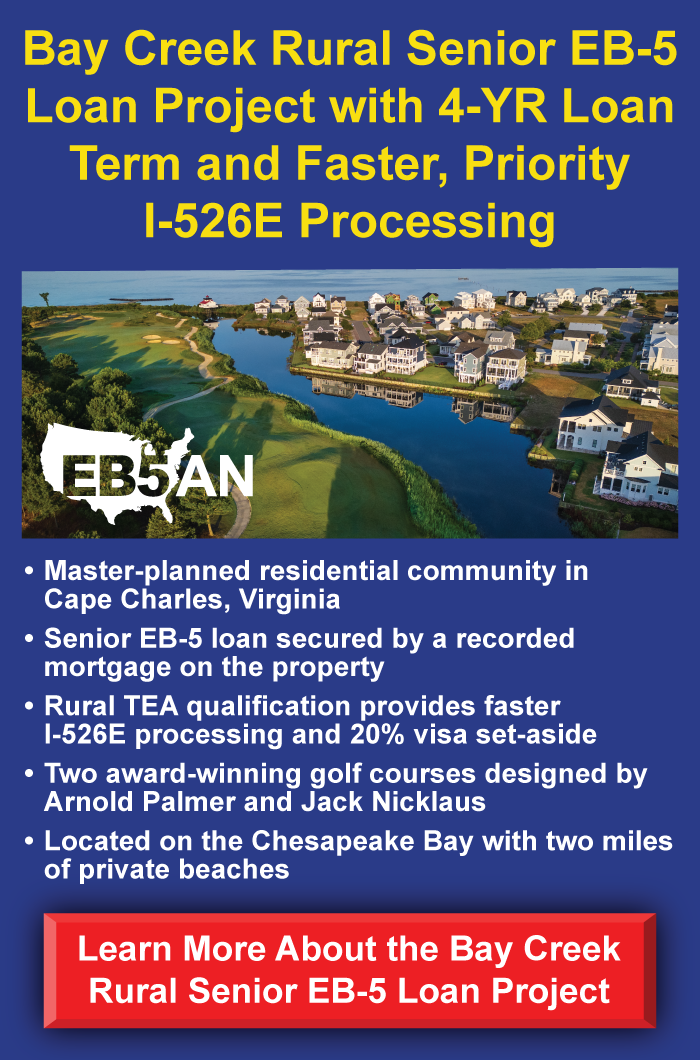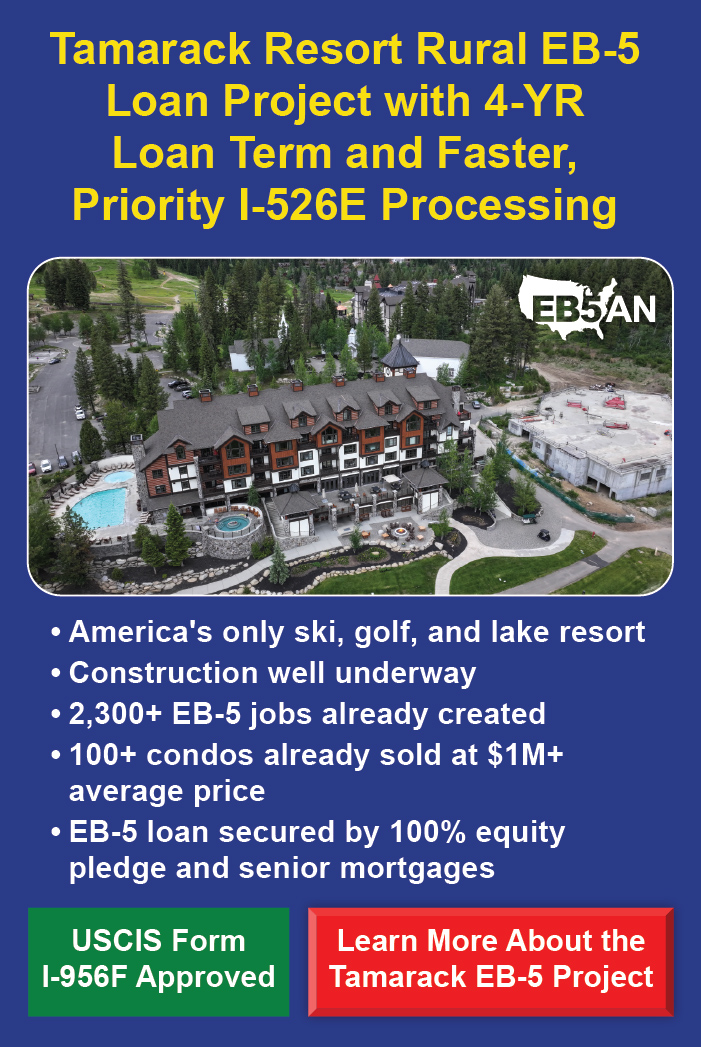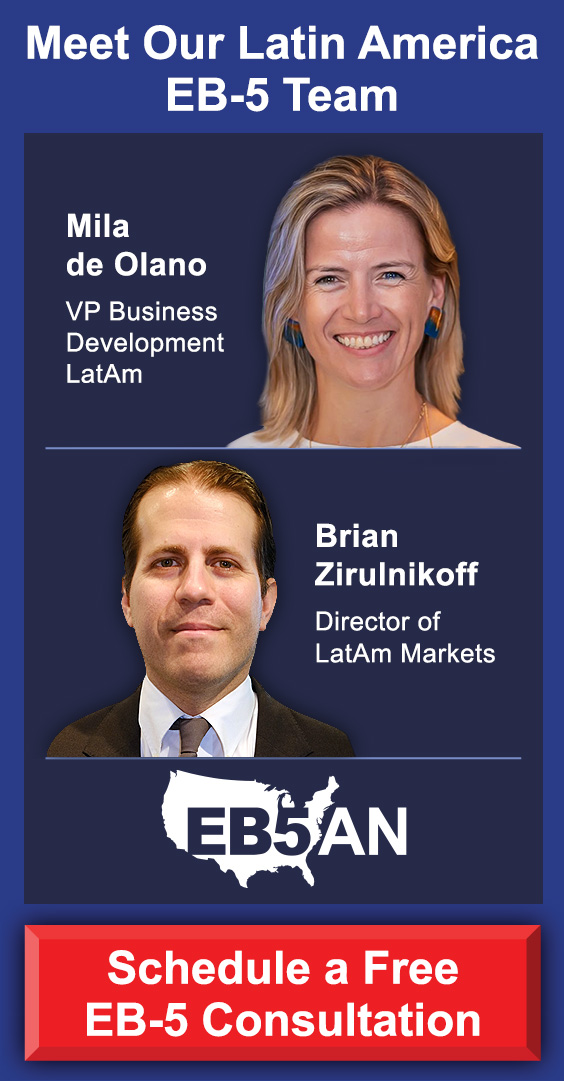
Since July 2020, Hong Kong has been considered to be part of Mainland China for EB-5 purposes.
EB-5 investors from Hong Kong are therefore in the same EB-5 visa queue and are subject to the same immigration regulations as foreign investors from Mainland China.
For years, most of the available EB-5 visas have been assigned to Mainland-born Chinese investors.
Nevertheless, this applicant group often experiences significant visa backlogs, which leave petitioners waiting for years to complete the EB-5 visa process.
After Hong Kong lost its preferential treatment in July 2020, EB-5 petitioners from Hong Kong have been included into the visa availability predicament experienced by Mainland-born Chinese petitioners.
This has worsened the EB-5 visa backlog significantly.
Why Is Hong Kong Now Considered Part Of Mainland China?
In July 2020, Donald Trump signed into law the Hong Kong Autonomy Act, which passed Congress unanimously.
This was in response to the Chinese Standing Committee of the National People’s Congress’s June 2020 enactment of the controversial Hong Kong national security law.
On the same day, Trump signed the Executive Order on Hong Kong Normalization, which derives its authority from the Act.
The Executive Order revokes Hong Kong’s special status conferred by the U.S.–Hong Kong Policy Act of 1992, which included a provision that the U.S. president could revoke Hong Kong’s special status if “Hong Kong is no longer sufficiently autonomous to justify differential treatment in relation to the People’s Republic of China.”
Both the Hong Kong Autonomy Act and the Executive Order on Hong Kong Normalization allow for the implementation of sanctions and asset freezes to attempt to dissuade the Chinese government from further decreasing the autonomy of Hong Kong.
Sanctions may be authorized against certain foreign people and foreign financial institutions.
Unless the July 2020 executive order is reversed or the United States enacts additional legislation governing the special treatment of Hong Kong residents, EB-5 investors from Hong Kong will likely face significant delays in the EB-5 process.
Is It Feasible To Invest In The EB-5 Immigrant Investor Program As An Investor From Hong Kong?
For any visa category, the USCIS (United States Citizenship and Immigration Services) processing times tend to fluctuate. These fluctuations depend on the number of pending applications and the number of applications being filed each year.
Although the EB-5 visa program has been in effect since 1990, it has gained the most popularity in more recent years.
In fact, 2017, 2018 and 2019 are the years when most of the applications were filed.
Currently, the U.S. Department of State estimates that there is a five-year backlog for Mainland China-born nationals seeking permanent residence in the U.S.
This visa backlog for China tends to fluctuate as Hong Kong Nationals apply for United States Citizenship through the EB-5 Immigrant Investor Program.
By contrast, for non-immediate family members of Chinese nationals, the process of obtaining a Green Card can take up to 10 years.
Therefore, despite the longer waiting times, the EB-5 visa program is still the fastest, most reliable way of obtaining a Green Card in the U.S.
To remain updated on current visa processing times, it is helpful to check the most recent visa bulletin. This report provides updated information on a monthly basis.
What Is An EB-5 Visa For Hong Kong Investors?
The EB-5 visa is an immigrant visa that grants a Green Card, or permanent residence to qualified Hong Kong foreign investors and their dependents.
In other words, a Green Card provides immigrant investors with an indefinite stay in the U.S.
The EB-5 visa for Hong Kong Investors requires a minimum investment into a U.S. business that has been listed under a regional center program, to create at least 10 permanent jobs for U.S. citizens.
What Are The Benefits Of An EB-5 Visa For Hong Kong EB-5 Investors?
There are many benefits for foreign nationals from Hong Kong when it comes to obtaining a Green Card through the EB-5 Investment Program.
Some of these benefits include:
Permanent residency and a Green Card
Due to the political unrest in their home nation, Hong Kong EB-5 investors are looking to immigrate to the U.S.
Having a Green Card enables Hong Kong EB-5 investors and their families or dependents, to live and work anywhere in the U.S.
After capital investment in a new commercial enterprise, a Hong Kong national will be able to apply for U.S. citizenship after being a permanent resident for five years.
A premium education
Many Hong Kong EB-5 investors are looking to provide the best education for their children.
As a permanent resident in the U.S., the children of Hong Kong investors have access to all U.S. schools and universities without the restrictions generally placed on foreign students.
The unmarried children of Hong Kong investors also pay 150% to 300% lower tuition fees, as well as more funding and scholarship opportunities.
Improved job opportunities
Hong Kong investors are able to explore the many work opportunities available in the U.S. They need not worry about issues such as work permits, sponsorships, processing delays, visa expiries or restrictions on job mobility.
International travel
As Green Card holders, Hong Kong investors can enjoy great mobility when traveling internationally. They will enjoy the same travel benefits as U.S. born citizens.
How Long Does An EB-5 Visa Take To Process For Hong Kong Investor
Hong Kong investors can expect a visa processing time of Form I-526E (Immigrant Petition by Standalone Investor) of between 29.5 to 61 months.
Form I-526E needs to be filed with the USCIS in order to initiate an EB-5 petition.
To apply for an EB-5 visa, we recommend the following process for Hong Kong investors:
- Choose an Investment Advisor and Immigration Attorney
Your immigration attorney should always be highly responsive, intelligent, conscientious and honest.
Apart from these qualities, your immigration attorney should also have an excellent set of skills and plenty of experience in assisting investors to achieve their goals.
Lorrie, who is originally from the Philippines, recommends that you choose an Immigration Attorney that is highly responsive, which she found EB5AN to be…
Before appointing an immigration attorney, we recommend that you consider the following points:
In-depth experience with EB-5 program
The most important consideration when choosing an EB-5 immigration attorney should be their level of experience when it comes to the EB-5 investment program.
Questions you should ask an EB-5 immigration attorney include whether they have been recognized by their colleagues as an EB-5 expert.
In addition, you can inquire as to whether they have been asked to speak at EB-5 conferences or asked to write authority articles for any publications.
Lastly, you will want to know how many cases your attorney has personally overseen.
A high level of experience as an immigration attorney
Your EB-5 immigration attorney should be handling immigration, as well as cases regarding the EB-5 Investor Program.
If they only manage EB-5 cases, they may miss out on the details that are necessary for them to be familiar with when it comes to your actual immigration.
Your attorney will need to present information to the USCIS about various laws pertaining to your home country’s laws.
For this reason, an EB-5 immigration attorney needs to understand the tax that applies to Hong Kong, as well as China’s banking system, real estate and criminal laws.
Experience in assisting fellow citizens of your country
Your attorney will need to have had a lot of experience working with other citizens from your home country.
If the immigration attorney has not worked on EB-5 cases on behalf of citizens from Hong Kong, he or she will not have the knowledge of local documentation or laws which may be required to handle your case.
The time and capacity required to manage your case
Your EB-5 immigration attorney should have enough available time to work closely with you on your case. This means that it should take a matter of days or weeks and not months for your application and documentation to be processed.
An EB-5 immigration attorney that is stretched too thin, will not be able to serve your interests. We recommend that you inquire about how much time your attorney will be dedicating to your case.
Independent to Regional Centers
It is best to choose an immigration attorney that is dedicated to representing your interests. This is most likely to be achieved by a lawyer that does not also represent any regional centers.
An attorney that is aligned to any one particular regional center, will be more likely to refer you to that regional center, rather than seek out an investment opportunity that benefits you and suits your needs.
Avoiding a conflict of interest is absolutely essential in the EB-5 investment process.
- Identify a safe EB-5 Project that aligns to the EB-5 Investor Program requirements
Choosing a safe regional center project requires diligent, careful research and preparation.
Finding a financially strong EB-5 investment project will determine how quickly an EB-5 investor will be able to get a timely return on their EB-5 investment funds.
Fortunately, EB5AN has collaborated with numerous highly successful EB-5 investment projects that have seen success with the many immigrant investors that we have helped succeed.
Michael is a business owner and understands what it takes to make an investment succeed. He recommends that EB-5 investors closely consider the reputation of everyone involved in an EB-5 project.
- Invest funds into the chosen EB-5 Project
For 2023, the minimum EB-5 investment in a qualifying new commerical enterprise (NCE) is $1,050,000.
For those foreign nationals who invest in EB-5 projects location in a targeted employment area (TEA), the minimum investment is $800,000.
TEAs are areas within the United States that have been designated by the USCIS, which either have a high rate of unemployment of 150% above the national average, or are rural areas.
The primary objective of investing into these areas is to promote job creation and overall economic growth.
EB-5 investors will also need to prove the source of their investment funds and can use any of the following to invest:
- Profits from previous or existing business operations.
- Loans from a financial institution or from an individual.
- Salaries or wages.
- Financial gifts from an individual.
- Inheritance funds.
In addition to a comparable level of future income and assets, the financial criteria for Hong Kong investors can include any one of the following:
- A net worth of U.S. dollars: $1,050,000 or HK$8,241,549.75 Hong Kong Dollars for an individual or married couple.
- A minimum of U.S. dollars: $200,000 or HK$1,569,819 Hong Kong Dollars in individual income over each of the previous two years
- A minimum of U.S. dollars: $300,000, or HK$2,354,728.50 Hong Kong Dollars in joint income in each of the previous two years.
- File the I-526E Petition
Form I-526 or I-526E is the application to join the EB-5 Immigrant Investor Program.
Depending on the EB-5 Investment, an EB-5 Investor will need to file one of the following two forms with the USCIS:
- Form I-526: Immigrant Petition by a Standalone Investor – for direct EB-5 investors.
- Form I-526E: Immigrant Petition by a Regional Center Investor – for regional center investors.
- Apply to Register for Permanent Residence or Adjust Immigration Status
Once Form I-526, or I-526E has been approved, the immigrant investor, their spouse and any unmarried children under the age of 21, will receive permanent resident states in the U.S.
- Receive two-year conditional Green Card
It is important to note that permanent resident status lasts for two years, without the option to renew.
In order to remove the conditions on your permanent resident status, immigrant investors will need to file a petition within the 90-day period before their conditional Green Card expires.
- Obtain permanent residency and file petition to remove conditions on permanent resident status
As a Green Card entrepreneur, immigrant investors need to file Form I-829, Petition by Entrepreneur, in order to remove any conditions.
It is helpful to appoint an immigration attorney for any of these forms as if any information is left out, the petition will be rejected immediately. It is also important to remember to sign the form, or it will be rejected.
For Form I-829, the following information is required:
Part 1 – Basis for Petition.
Part 2 – Information About You.
- Family Name.
- Alien Registration Number.
- Date of Birth.
- Date of Admission as a Conditional Permanent Resident.
- Mailing Address.
Part 3 – Information About Your Current or Former Conditional Permanent Resident Spouse.
- Date of Birth (if applying with you).
Part 4 – Information About Your Children.
- Date of Birth (if applying with you).
What Is The Cost For An EB-5 Visa Cost For Hong Kong Investors?
In addition to the EB-5 investment amount of $800,000 for a targeted employment area, or $1,050,000 for a non-targeted employment area, the cost of obtaining an EB-5 Visa for Hong Kong investors includes:
- Filing Form I-526/I-526E: $11,160.
- Application to Register Permanent Residence or Adjust Permanent Resident Status Form I-485: $1,140.
- Filing of Form I-829: $9,525.
What Is The Next Step For Hong Kong EB-5 Investors?
Aligning with a qualified and knowledgeable immigration attorney is essential for Hong Kong immigrant investors.
Not only will this relationship assist Hong Kong investors learn about the various investment opportunities available, but it will also provide access to in-depth information regarding the EB-5 visa application process.
In addition, a dedicated immigration attorney will be able to make sense of the often complex EB-5 investment process.
To start the EB-5 investment process, why not reach out to us at EB5AN.
Our team is standing by to assist you with all the insight, guidance and assistance that you need.










